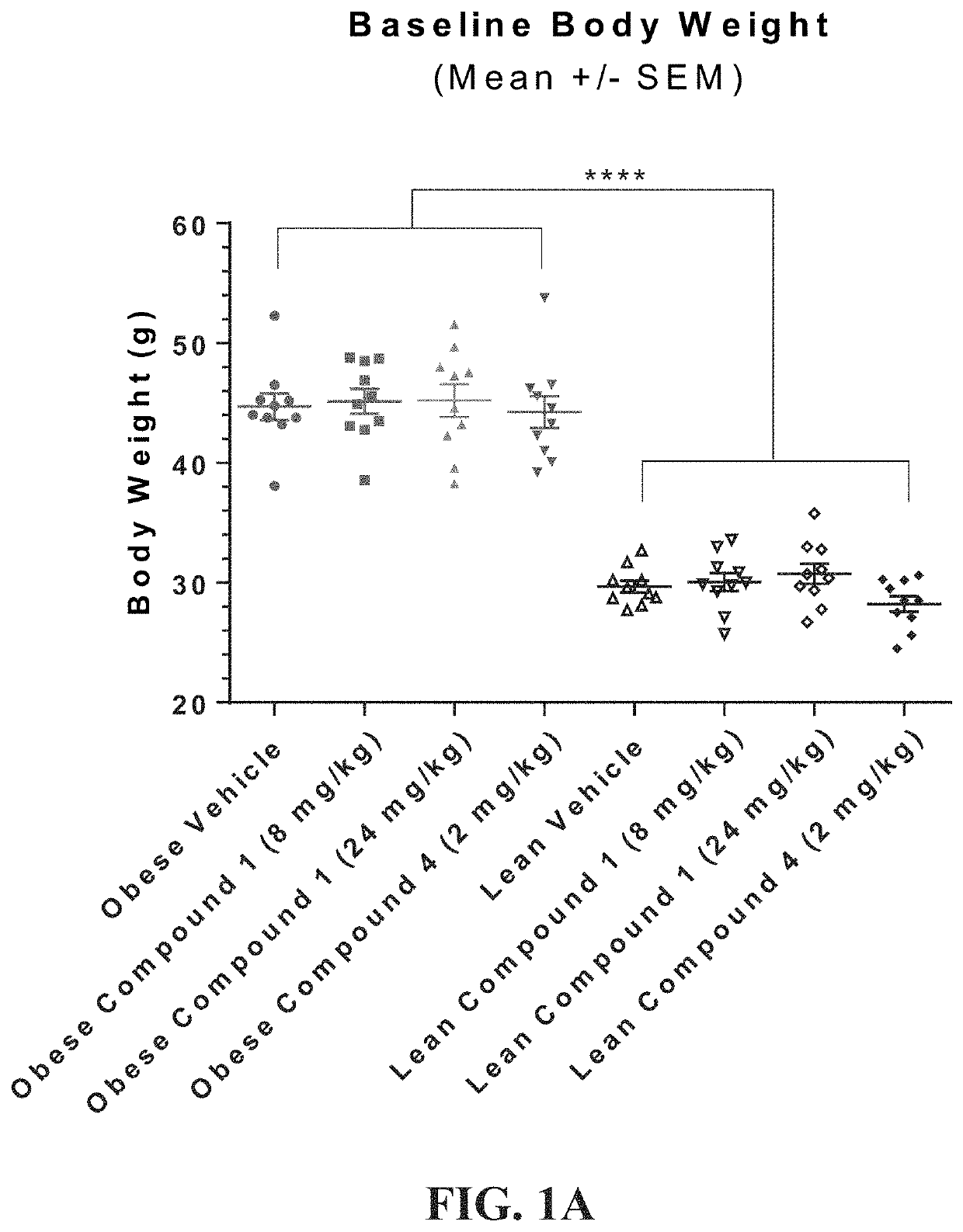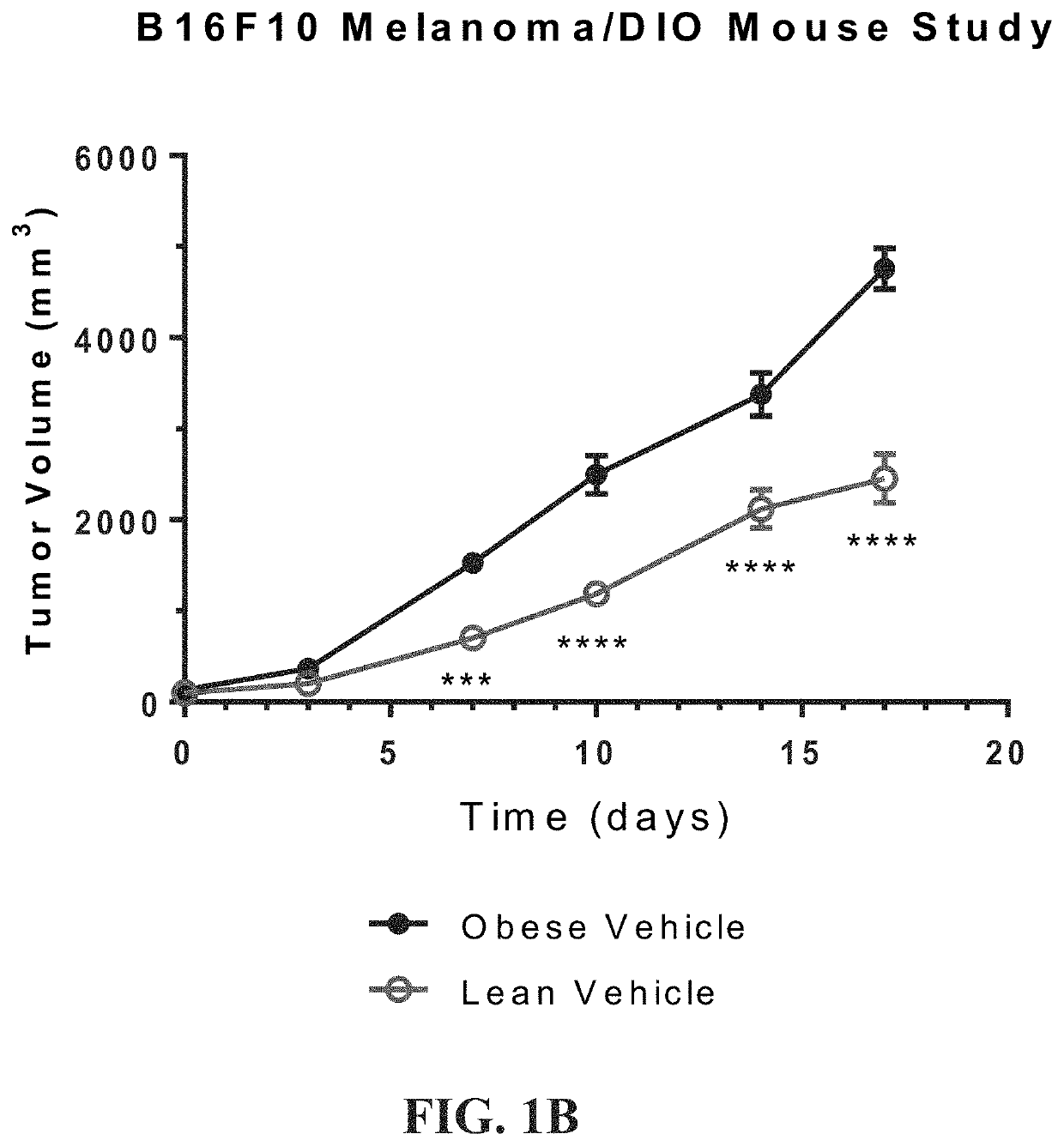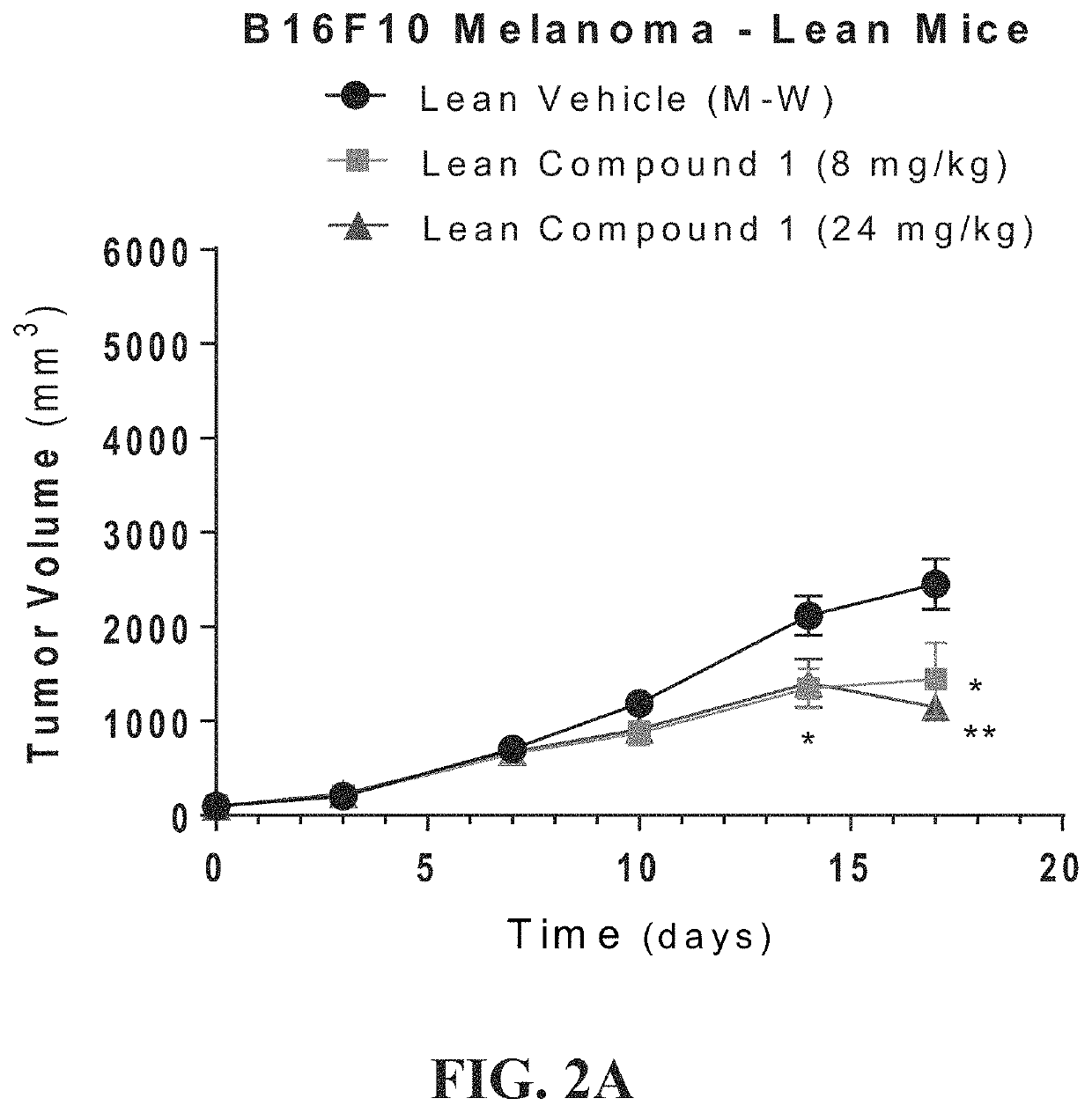Treatment for tumors driven by metabolic dysfunction
a metabolic dysfunction and tumor technology, applied in the field of tumors driven by metabolic dysfunction, can solve the problems of no specific treatment regimen for metabolically dysfunctional people, and treatment specifically designed
- Summary
- Abstract
- Description
- Claims
- Application Information
AI Technical Summary
Benefits of technology
Problems solved by technology
Method used
Image
Examples
example 1
esting B16F10 Melanoma / DIO Mice—Body Weight, Tumor Growth, Adipose Tissue Mass and White Blood Cell Count
[0479]An in vivo study was undertaken to establish a syngeneic mouse model to demonstrate that diet-induced obesity accelerates tumor growth. The study was to demonstrate the efficacy of compounds of the disclosure in this obesity-fueled, metabolically-driven, tumor model. In particular to demonstrate efficacy against tumors in obese animals and demonstrate an effect in corresponding lean animals. The study would compare weight changes in both obese and lean animal groups; measure biologic changes in hematology parameters; and compare conjugate molecules of the present disclosure against related small molecules for efficacy.
[0480]C57BL / 6 male mice were ad libitum fed TD.06414 a high fat diet (HFD) composed of 60% Kcal from fat (DIO) for 12-14 weeks, until average body weight of the obese mice was >40 g. Age-matched C57Bl / 6 male mice were maintained on a normal rodent diet (10% fa...
example 2
esting DIO Mice—Leptin and Adiponectin
[0494]Leptin is an adipocyte-derived hormone that was discovered based upon its ability to inhibit caloric intake by signaling through receptors located on neurons within the hypothalamus of the central nervous system (CNS). Genetic deletion of leptin in mice and humans causes severe obesity, which is reversed following exogenous delivery of recombinant leptin. The circulating levels of leptin are positively correlated with the mass of adipose tissue in the host, and elevated levels of leptin observed in obese animals and humans. Unlike normal weight animals and humans, obese animals and humans do not sense their endogenously elevated levels of leptin and are resistant to its anorectic, anti-obesity effects. Given the prolonged and persistent time course of obesity development, peripheral tissues and organs are exposed to elevated levels of leptin over many years. Since leptin is now recognized to regulate a number of biological processes outsid...
example 3
esting EO771 Mammary Tumor / DIO Mice—Tumor Growth, Body Weight
[0500]Female mice were surgically ovariectomized then fed a high fat diet (60% fat) for 14 weeks, to induce obesity and metabolic dysfunction or a low-fat diet (10% fat). Subsequently mammary gland tumors were induced by injecting syngeneic EO771 cells into the fourth mammary gland (50,000 / mouse). When tumors became palpable, Compound 1 (at 24 mg / kg) or vehicle (5% mannitol / water) were dosed subcutaneously every four days for a total of four doses.
[0501]FIG. 10A shows tumor growth in lean EO771 Mammary Tumor / DIO mice following treatment with vehicle or 24 mg / kg of compound 1 of the present disclosure. FIG. 10B shows tumor growth in obese EO771 Mammary Tumor / DIO mice following treatment with vehicle or 24 mg / kg of compound 1 of the present disclosure. The data were analyzed using two-way ANOVA with multiple comparisons, *p<0.05, **p<0.01, ***p<0.005 and ****p<0.0001. The results of FIGS. 10A and 10B demonstrate that EO771 t...
PUM
 Login to View More
Login to View More Abstract
Description
Claims
Application Information
 Login to View More
Login to View More - R&D
- Intellectual Property
- Life Sciences
- Materials
- Tech Scout
- Unparalleled Data Quality
- Higher Quality Content
- 60% Fewer Hallucinations
Browse by: Latest US Patents, China's latest patents, Technical Efficacy Thesaurus, Application Domain, Technology Topic, Popular Technical Reports.
© 2025 PatSnap. All rights reserved.Legal|Privacy policy|Modern Slavery Act Transparency Statement|Sitemap|About US| Contact US: help@patsnap.com



